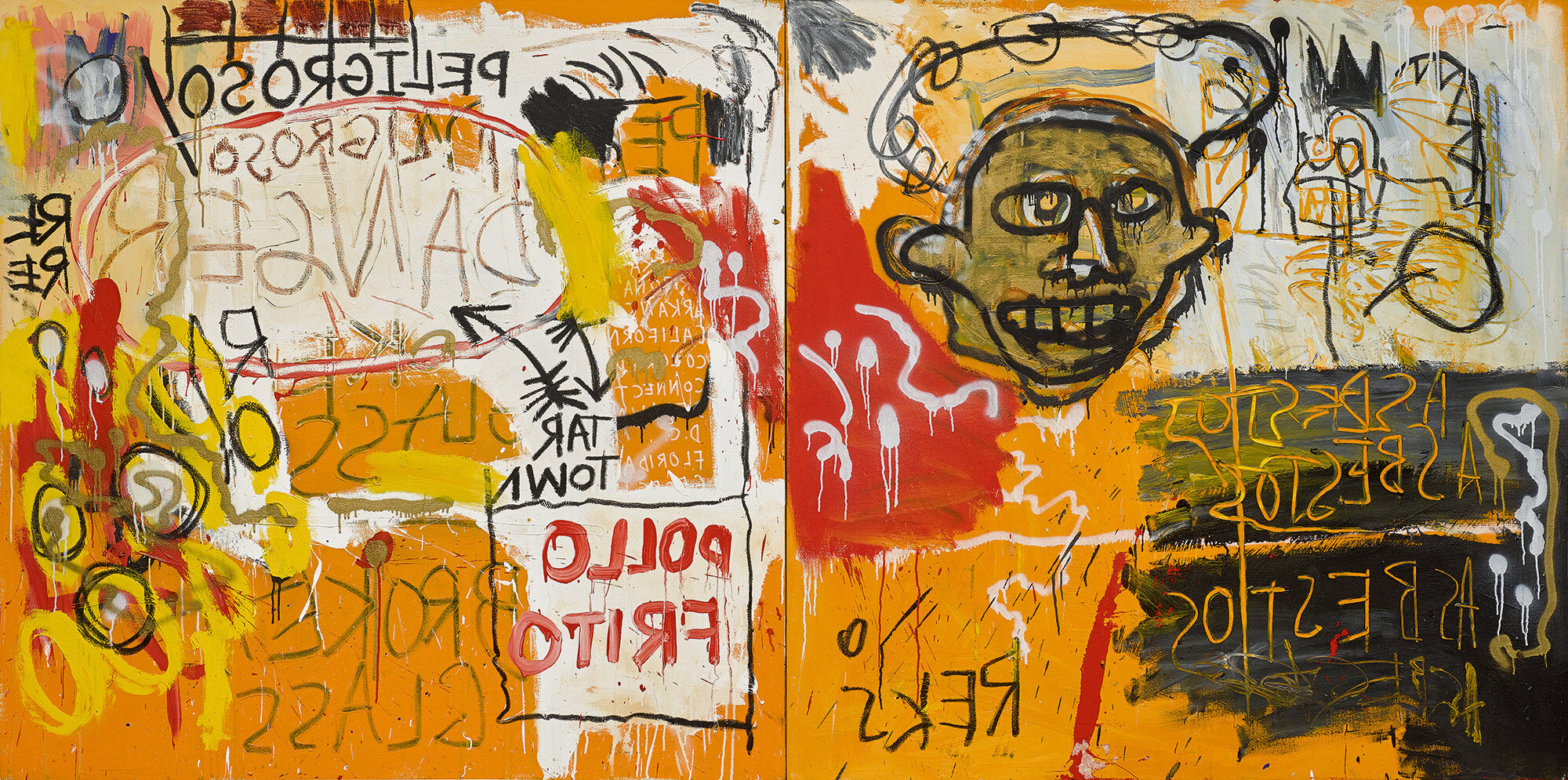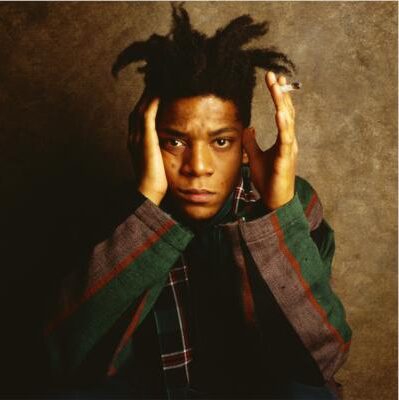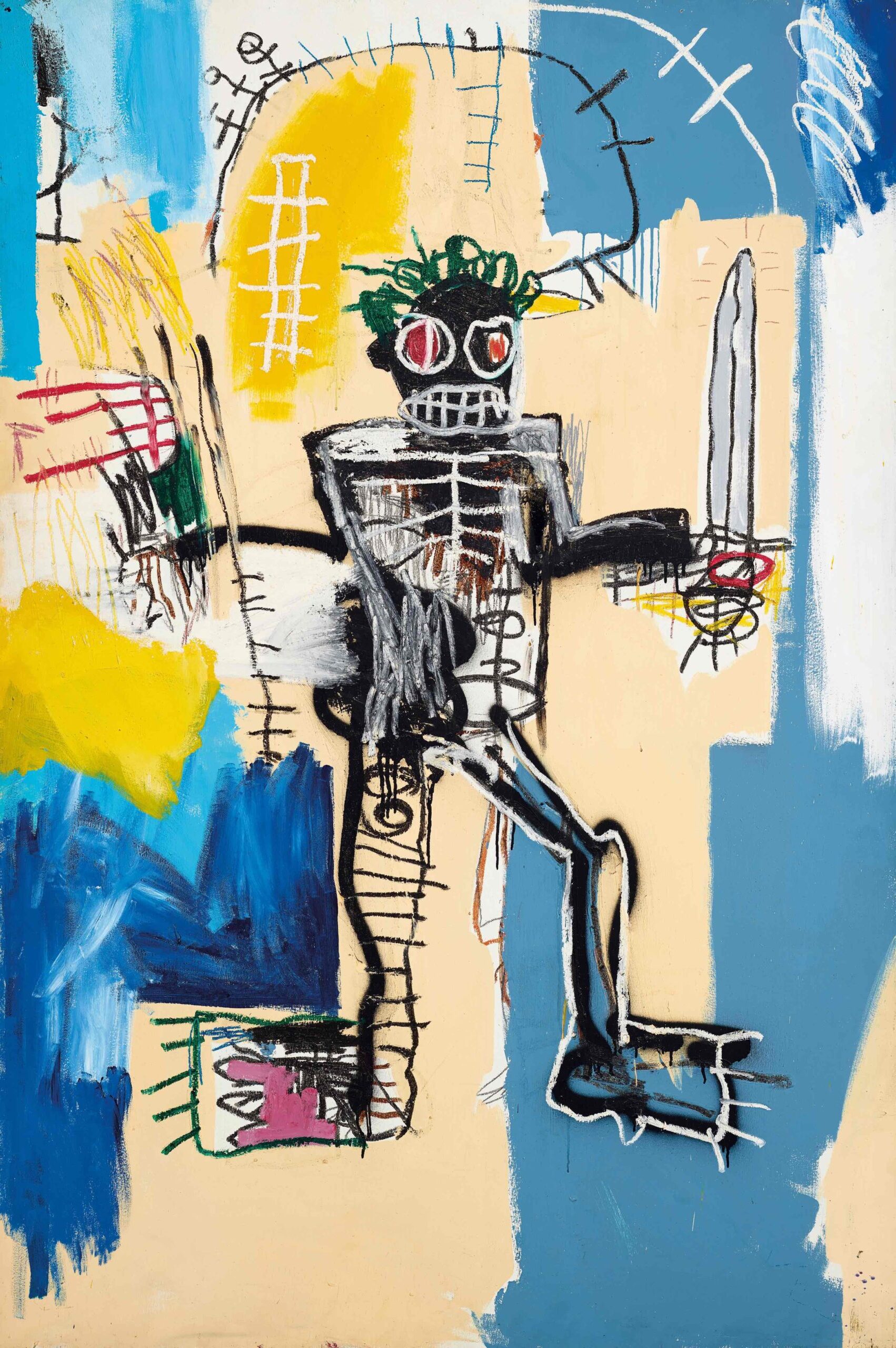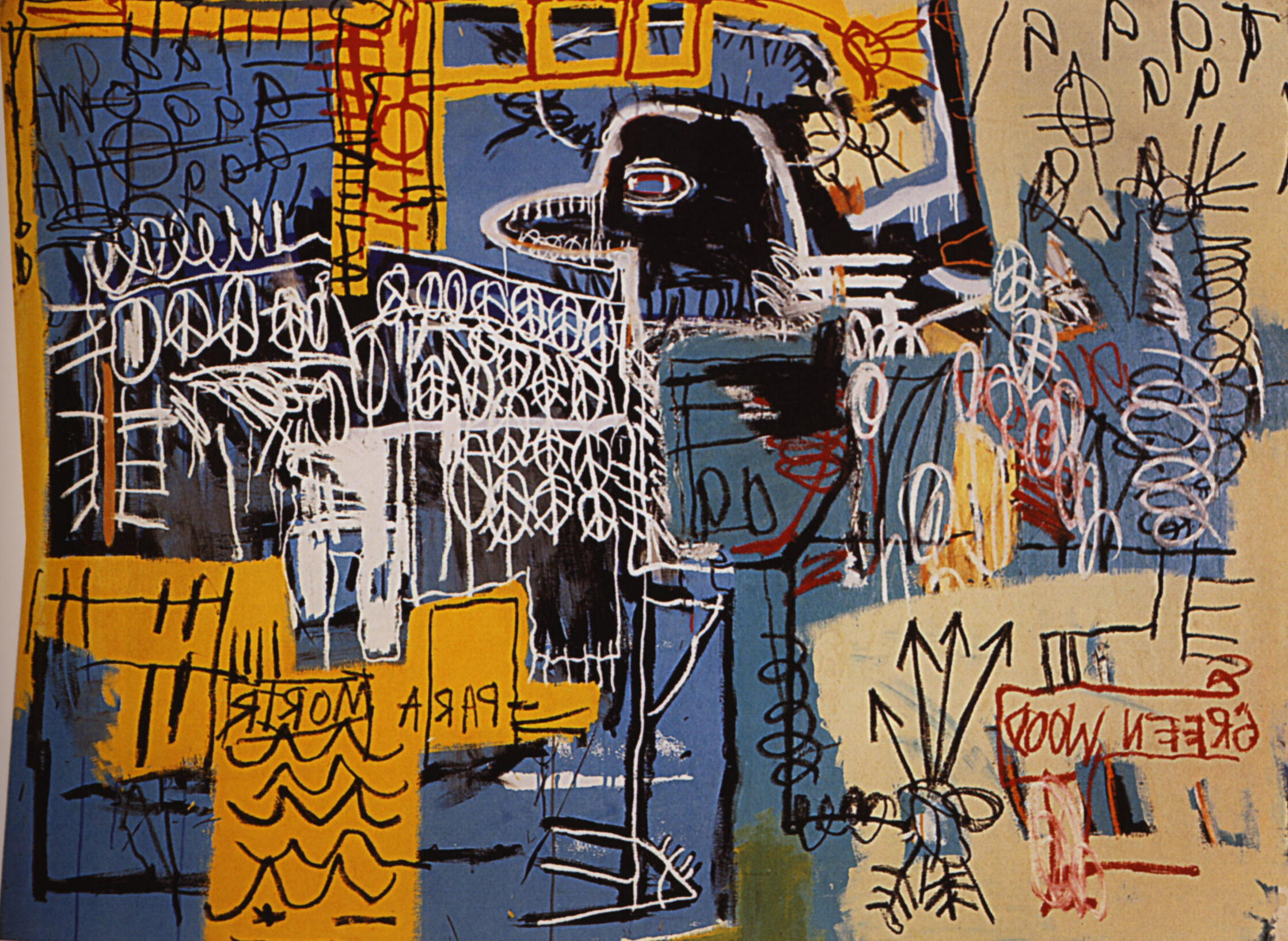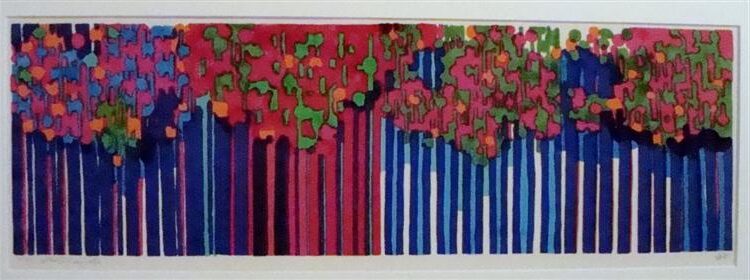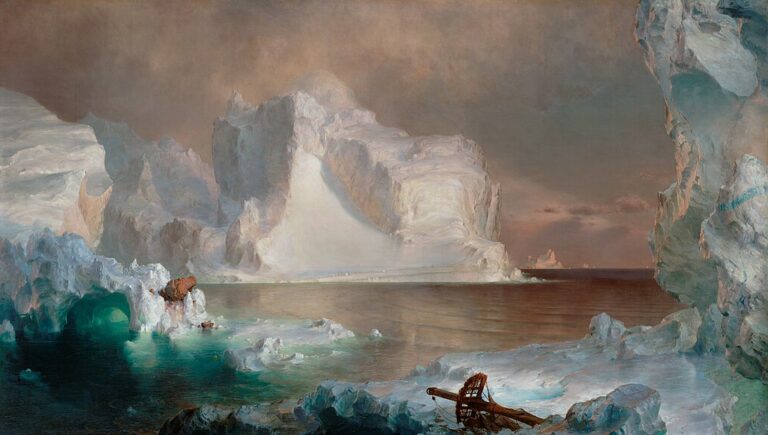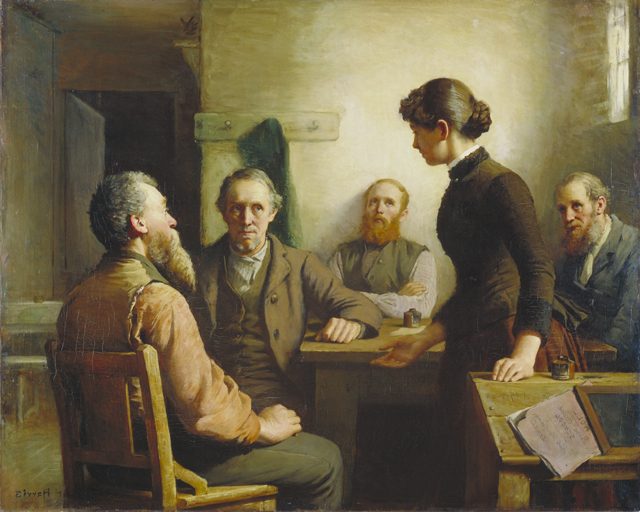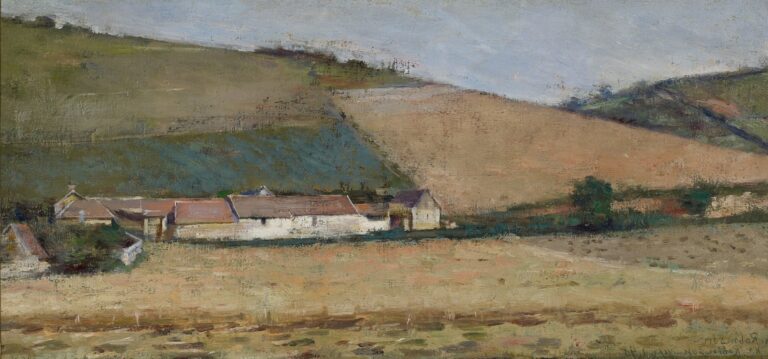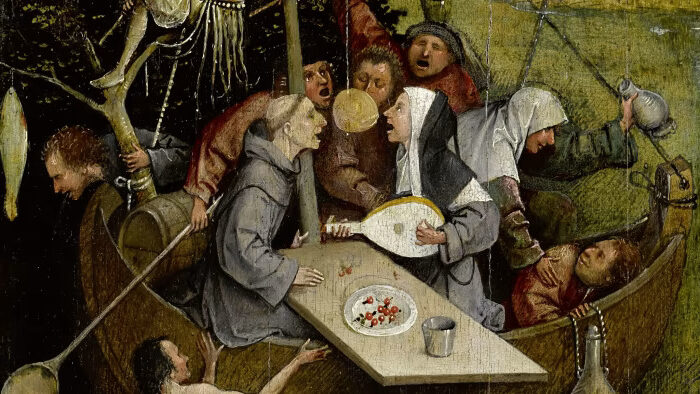Jean-Michel Basquiat: Painter Who Revolutionized Neo-Expressionist Art
Born: December 22, 1960, New York City, U.S.
Death: August 12, 1988, New York City, U.S.
Art Movement: Neo-expressionism
Nationality: American
Institution: Brooklyn Museum of Art
Jean-Michel Basquiat: Painter Who Revolutionized Neo-Expressionist Art
Early Life and Career
Jean-Michel Basquiat had a remarkable journey from childhood to artistic stardom. His background, artistic development, and meteoric rise occurred against the backdrop of 1970s New York City.
Childhood and Family Background
Born on December 22, 1960, in Brooklyn, New York, Jean-Michel Basquiat grew up in a middle-class household with diverse cultural influences. His father, Gerard Basquiat, was Haitian, while his mother, Matilde, had Puerto Rican roots.
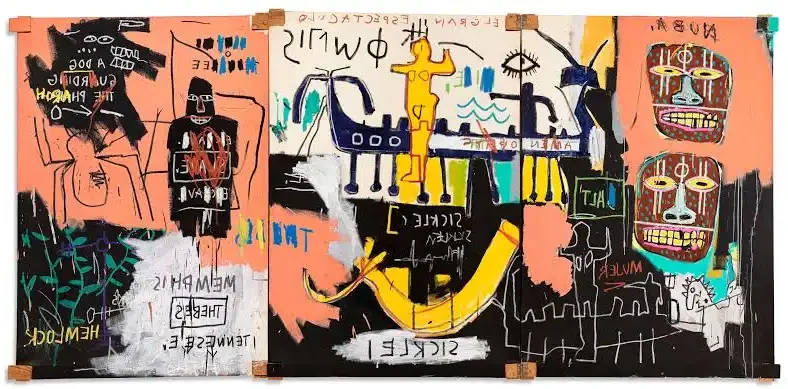
El Gran Espectáculo (The Nile), 1983 by Jean-Michel Basquiat
This multicultural upbringing significantly shaped his worldview and later artistic expressions. Basquiat was naturally gifted, learning to read and write by age four and becoming fluent in English, Spanish, and French during childhood.
A pivotal moment occurred when he was hit by a car at age seven. During his recovery, his mother gave him Gray’s Anatomy, which deeply influenced his later artistic motifs featuring anatomical drawings and diagrams.
Formative Years in Art
Basquiat’s formal education was inconsistent, but his artistic education flourished outside traditional settings. He attended City-As-School, an alternative high school for gifted students, but never completed his diploma.
By 1976, he began creating spray-painted graffiti around lower Manhattan with friend Al Diaz. Their work featured cryptic messages signed “SAMO©” (short for “same old shit”), which gained attention in the downtown art scene.
Early artistic influences included:
- Street art culture of late 1970s New York
- Television cartoons and their bold visual styles
- Comic books with their narrative storytelling
- Museums his mother frequently took him to visit
Rise to Fame
Basquiat’s transition from street artist to gallery sensation happened quickly. In 1980, he participated in the landmark “Times Square Show,” which brought his work to wider attention.
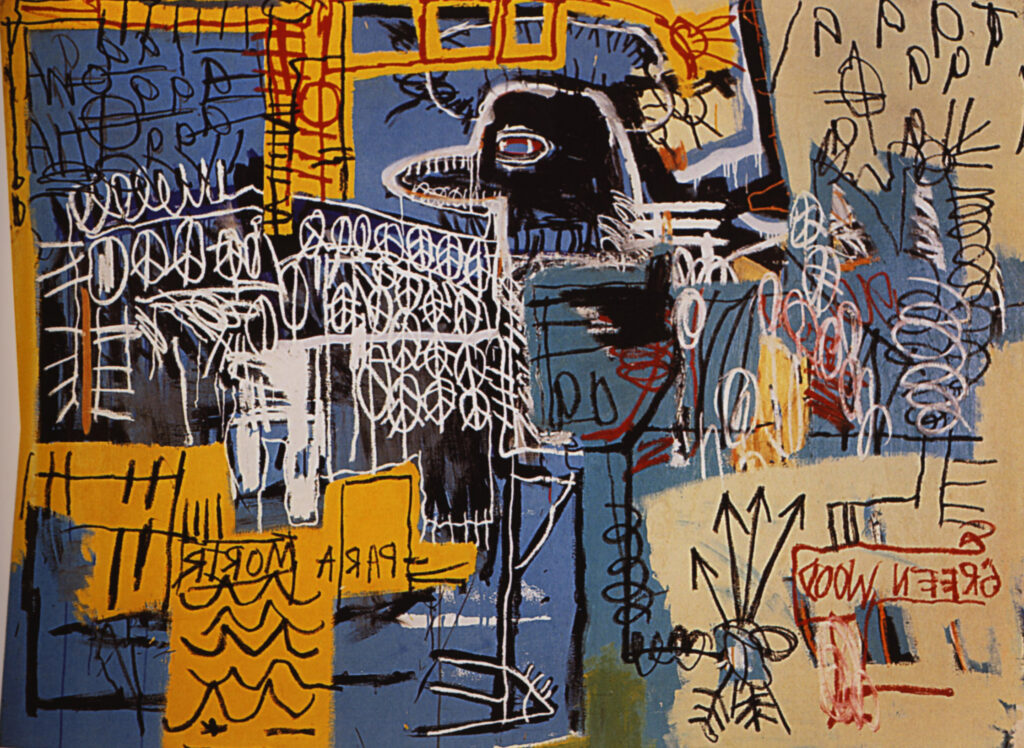
Bird on Money, 1981 by Jean-Michel Basquiat
His first solo exhibition in 1982 at the Annina Nosei Gallery sold out completely. Critics praised his raw, expressionistic style that blended text, symbols, stick figures, and abstract marks.
Influential relationships accelerated his career trajectory. Most notably, his friendship with Andy Warhol provided both mentorship and publicity as they collaborated on numerous works between 1983-1985.
By 1983, at just 22 years old, Basquiat had become the youngest artist ever to participate in the Whitney Biennial. His paintings now commanded prices as high as $50,000, cementing his status in the art world.
Artistic Style and Influence
Basquiat developed a unique artistic language combining raw expression with intellectual commentary. His work merged street art elements with art historical references, creating a distinct visual vocabulary that continues to influence artists today.
Visual Themes and Symbols
Basquiat’s work features recurring symbols and motifs that became his visual signature. Crowns and halos appear frequently, suggesting both royalty and sainthood, often bestowed upon Black historical figures and jazz musicians he admired. His trademark three-pointed crown became an iconic symbol of his work.
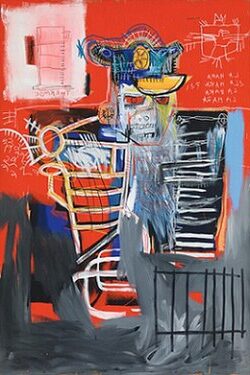
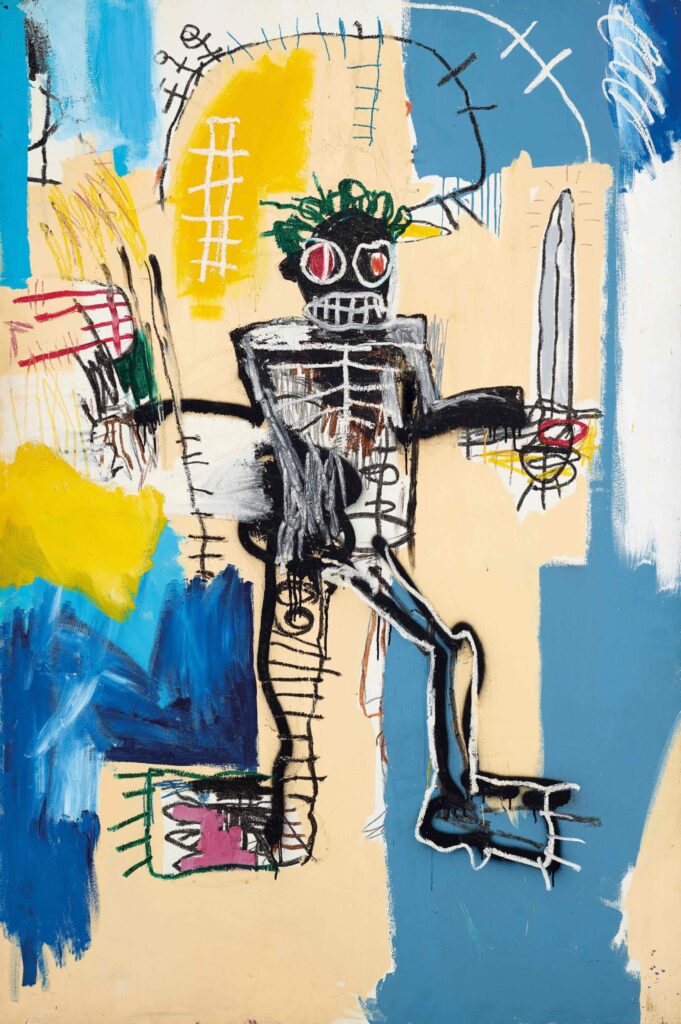
Anatomical drawings appear throughout his paintings, reflecting his childhood interest in a medical textbook called Gray’s Anatomy. These skeletal images often serve as metaphors for examining what lies beneath surface appearances.
Text plays a crucial role in Basquiat’s work. Words are crossed out deliberately, drawing attention to their importance rather than negating them. His use of language includes lists, mathematical equations, and fragmented phrases that create multiple layers of meaning.
Significant Works
“Untitled (Skull)” (1981) showcases Basquiat’s raw expressive style with its fragmented skull against a blue background. The painting demonstrates his interest in anatomy and mortality.

Riding with Death, 1988 by Jean-Michel Basquiat
“Dustheads” (1982) represents Basquiat at the height of his powers, featuring two frenzied figures against a vibrant background. The painting sold for $48.8 million in 2013, setting an auction record for his work at that time.
“Horn Players” (1983) pays homage to jazz legends Charlie Parker and Dizzy Gillespie. This work exemplifies Basquiat’s celebration of Black cultural figures through his distinctive combination of text, symbols, and portraiture.
“Riding with Death” (1988) is one of his final works, showing a figure riding a skeleton. Many view this painting as eerily prophetic of his early death.
Collaborations and Contemporaries
Basquiat’s collaboration with Andy Warhol produced approximately 200 works between 1984 and 1986. Their partnership created an interesting fusion of Warhol’s pop art aesthetic with Basquiat’s raw expressionism, though critics often dismissed these works during their lifetime.
Keith Haring was another important friend and contemporary. Both emerged from the New York street art scene and achieved gallery recognition, sharing themes of social justice in their work.
Basquiat worked with hip-hop pioneer Fab 5 Freddy, creating connections between emerging hip-hop culture and visual art. He also produced the beat for “Beat Bop,” a hip-hop single by Rammellzee and K-Rob, and designed its cover art.
His influence extended globally, impacting artists like the Brazilian brothers Os Gêmeos and British artist Banksy, who continue his tradition of bringing street art sensibilities into fine art contexts.
Legacy and Impact
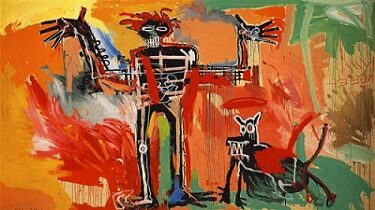
Boy and Dog in a Johnnypump, 1982 by Jean-Michel Basquiat
Jean-Michel Basquiat’s influence continues to resonate throughout the art world decades after his death. His distinctive style and powerful social commentary have shaped contemporary art movements and inspired generations of artists.
Influence on Modern Art
Basquiat’s raw, expressive style revolutionized the art scene of the 1980s and continues to influence artists today. His work bridged street art and fine art, legitimizing graffiti as a respected art form.
Many contemporary artists cite Basquiat as a direct influence, including Kaws, Banksy, and Hebru Brantley. His technique of combining text, symbols, and primitive figures created a visual language that many artists have adopted and adapted.
Basquiat’s exploration of racial identity, power structures, and social inequality remains relevant in today’s art discourse. His work gave voice to marginalized communities and challenged the predominantly white art establishment.
Hip-hop culture and music also draw heavily from Basquiat’s aesthetic and rebellious spirit. His cultural impact extends beyond visual arts into fashion, music, and popular culture.
Exhibitions and Collections
Basquiat’s works are housed in prestigious museums worldwide, including the Museum of Modern Art, the Whitney Museum, and the Broad in Los Angeles. His paintings regularly achieve record-breaking prices at auctions.

Profit I by Jean-Michel Basquiat, 1982
In 2017, his painting “Untitled” (1982) sold for $110.5 million at Sotheby’s, setting a record for an American artist at auction. This sale confirmed his position as one of the most financially valuable artists in history.
Major retrospectives continue to introduce new audiences to Basquiat’s work. The Barbican’s “Boom for Real” (2017) and the Brant Foundation’s 2019 exhibition attracted record attendance numbers.
Museums have increasingly contextualized Basquiat’s work within art history, acknowledging his significant contributions to contemporary art. Educational programs highlight his techniques and themes for new generations.
Frequently Asked Questions
Jean-Michel Basquiat left an indelible mark on the art world with his distinctive style, powerful themes, and cultural impact. His rise to prominence happened rapidly, and his artistic legacy continues to influence contemporary artists.
What are the distinguishing features of Jean-Michel Basquiat’s artistic style?
Basquiat’s style combined primitive-looking drawings with bold colors and text. He often incorporated words, symbols, and diagrams that created layered meanings in his work.
His paintings featured recurring motifs like crowns, skulls, and African masks. These elements appeared alongside anatomical drawings and historical references.
The raw, unpolished quality of his work reflected his background in street art and graffiti. Basquiat’s compositions typically appeared spontaneous yet deliberate, with scratched-out words and seemingly chaotic arrangements that actually contained careful organization.
How did Basquiat rise to prominence in the art world?
Basquiat began as a graffiti artist in the late 1970s, tagging buildings in Lower Manhattan with the name SAMO©. These mysterious messages caught the attention of the New York art scene.
His breakthrough came in 1980 when he participated in the Times Square Show, a groundbreaking exhibition that showcased new downtown artists. This led to his first solo exhibition in 1982, which sold out.
Basquiat’s rapid ascent continued as major galleries and collectors recognized his talent. By age 25, he had achieved international recognition, with his works selling for substantial sums and appearing in prestigious museums and collections worldwide.
What themes and subjects are commonly explored in Basquiat’s works?
Racism and inequality featured prominently in Basquiat’s art. He often depicted Black figures as heroes and saints while critiquing systems of oppression.
His work examined power structures, colonialism, and class divisions in American society. Basquiat frequently included references to historical events and figures, particularly highlighting Black historical figures who had been overlooked.
Personal identity and internal struggle were also central themes. His paintings often contained autobiographical elements and reflections on his Haitian and Puerto Rican heritage, as well as explorations of mortality and human existence.
Can you discuss the influence of Basquiat’s cultural background on his art?
Basquiat’s Haitian and Puerto Rican heritage profoundly shaped his artistic vision. He incorporated Caribbean imagery, symbolism, and cultural references throughout his work.
He drew inspiration from African art and diaspora experiences. Masks, tribal imagery, and specific cultural symbols appeared regularly, reflecting his interest in his ancestral roots.
Basquiat did not speak Creole or Spanish fluently, yet these languages occasionally appeared in his text-heavy works. This multilingual approach represented his complex cultural identity and the experience of being between different worlds.
What was Basquiat’s relationship with Andy Warhol and how did it affect his career?
Basquiat and Warhol met in 1982 when Basquiat was 22 and Warhol was 54. They developed both a professional and personal relationship that lasted until Warhol’s death in 1987.
Their collaboration produced numerous joint works between 1984 and 1985. These paintings combined Warhol’s pop art sensibilities with Basquiat’s raw expressionism, creating a unique artistic dialogue.
The relationship benefited Basquiat by connecting him to Warhol’s established network in the art world. However, some critics claimed Basquiat was exploited or that the collaboration diluted his raw talent, which reportedly strained their friendship in later years.
How has Basquiat’s work impacted contemporary art and artists?
Basquiat’s influence extends across multiple artistic disciplines. He integrated text, imagery, and social commentary, inspiring countless painters, street artists, and designers.
His success helped legitimize graffiti and street art as serious art forms. Artists from marginalized communities point to Basquiat as a pioneer who broke barriers in the predominantly white art establishment.
The astronomical prices his works command today have elevated discussions about Black artists’ value in the art market. In 2017, his painting “Untitled” sold for $110.5 million, setting a record for an American artist at auction.

